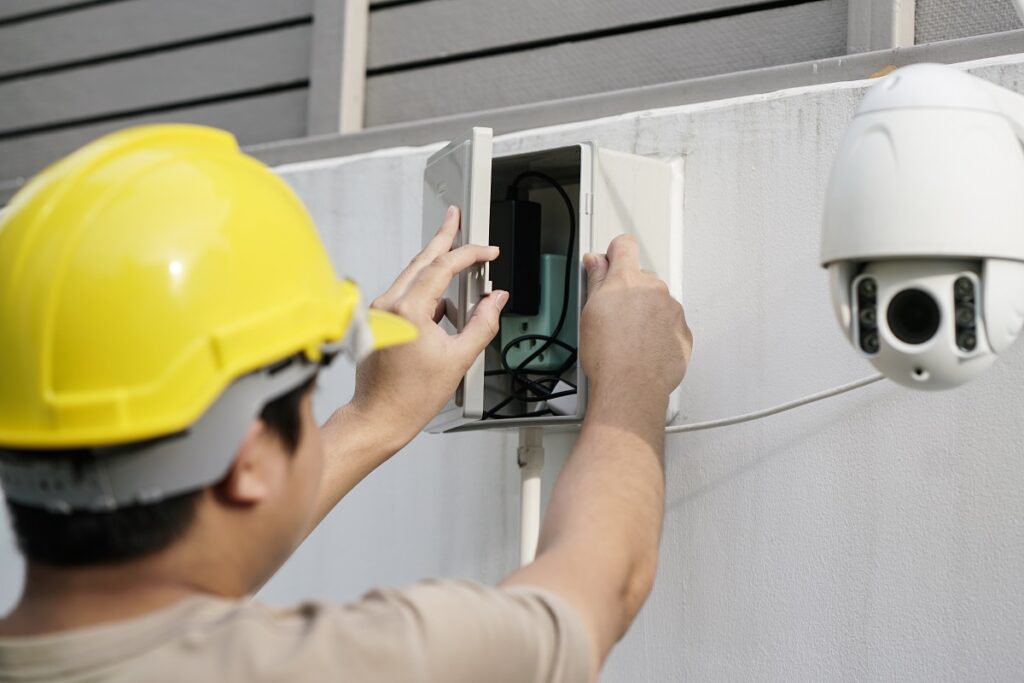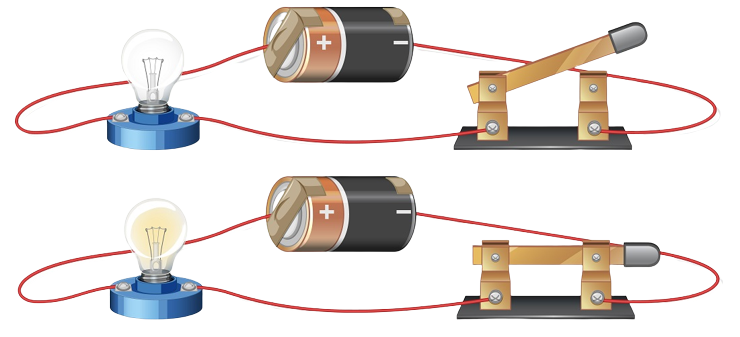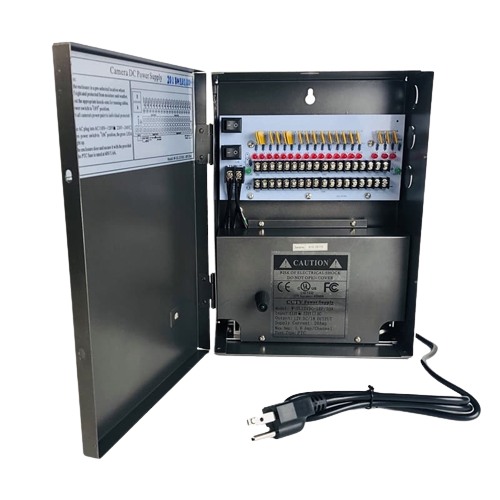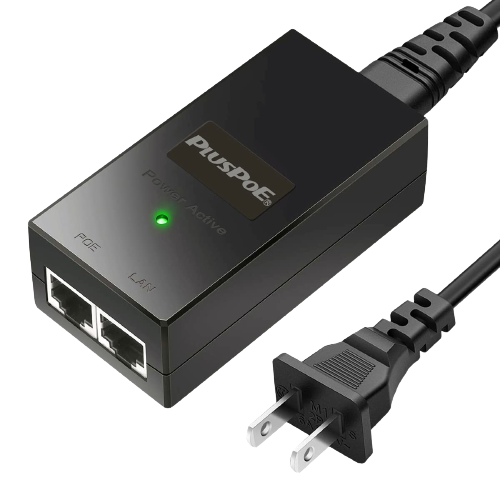CCTV Camera Power Supply: Enhancing Surveillance Efficiency

The pivotal heart of every surveillance system is the CCTV camera power supply. This unsung hero plays a critical role in ensuring the continuous and effective operation of CCTV cameras. Our guide delves into everything you need to know about CCTV power supplies: from their basic functionality, the role they play in CCTV systems, to selecting the best type for your needs.
A CCTV power supply is responsible for providing the necessary energy that a surveillance system needs to function optimally. Understanding the key components and how to determine the power requirements of your CCTV system are critical to ensuring its longevity and effectiveness.
Table of Contents
The Role of Power Supplies in CCTV Systems
The power supply plays an instrumental role in the operation and functionality of a CCTV system. In essence, it provides the electricity needed for the cameras and other associated devices to operate, acting as the lifeblood of the system.
The main purpose of a power supply is to convert the high-voltage alternating current (AC) from the power grid into low-voltage direct current (DC) that most CCTV cameras require. This transformation of electrical energy is vital as it ensures that the CCTV cameras receive power that is suitable for their operation, thereby preventing potential damage caused by incompatible voltage or current levels.
Furthermore, power supplies play a significant role in maintaining the stability and quality of a CCTV system. A power supply that provides consistent and clean power can help minimize issues such as image distortion or signal interference, which could potentially affect the reliability of the CCTV system.
A high-quality power supply also contributes to the longevity of your CCTV system. By providing the right amount of power and protecting the cameras from power surges or fluctuations, the power supply can help extend the operational lifespan of the cameras, reducing the need for costly replacements or repairs.
In addition to providing power to the cameras, the power supply can also cater to other devices in the system, such as recorders or network switches, especially in cases where Power over Ethernet (PoE) is being utilized.
Understanding Voltage, Current, and Power in CCTV Systems

CCTV systems’ performance is highly influenced by three electrical properties: voltage, current, and power. Grasping these concepts is essential for anyone setting up or maintaining CCTV systems. Let’s delve into these critical elements and explain how they influence the functionality of your surveillance system.
Voltage
Voltage, often denoted by the letter ‘V’, is the electrical force that pushes electric current through a circuit. It’s akin to the water pressure in your plumbing system. In CCTV power supplies, the voltage level needs to match the voltage requirement of your CCTV camera for it to function properly.
Current
Current, denoted by ‘I’ or ‘A’ for amperes, is the rate at which electric charge flows past a point in a circuit. Simply put, it’s the volume of electricity flowing in the circuit. The current rating of your power supply should be equal to or greater than your camera’s current requirement to avoid overheating or damaging the camera.
Power
Power, denoted by ‘P’ or ‘W’ for watts, is the rate at which energy is transferred in an electric circuit. It’s calculated as the product of voltage and current (Power = Voltage x Current). The power rating of a CCTV power supply must be enough to cater to the power demands of your CCTV system.
Here’s a simple table summarizing these concepts:
| Electrical Property | Symbol | Definition | Importance in CCTV Systems |
|---|---|---|---|
| Voltage | V | Electrical force that pushes electric current through a circuit | Must match the camera’s voltage requirement |
| Current | I or A | The rate at which electric charge flows in a circuit | Power supply’s current rating should be equal to or greater than the camera’s current requirement |
| Power | P or W | The rate of energy transfer in an electric circuit (Power = Voltage x Current) | Power rating of the power supply must be enough to cater to the power demands of the CCTV system |
Understanding voltage, current, and power is the first step towards calculating the power requirement of your CCTV system, which is crucial when choosing an appropriate power supply. These fundamentals can help prevent system failure and maximize the efficiency and lifespan of your CCTV system.
Calculating Power Requirements for a 20-Camera CCTV System
To calculate the power requirements for a CCTV system, we must consider two primary factors: the power requirement per camera and the total number of cameras. The power requirement of a CCTV camera is typically provided by the manufacturer, stated in watts (W).
Let’s consider a common scenario: each camera requires 12 volts (V) of DC power and draws 500 milliamps (mA), or 0.5 amps (A), of current.
Here’s how you’d calculate the power requirement:
- First, you need to calculate the power requirement for a single camera. As mentioned above, power (P) is the product of voltage (V) and current (I), which can be written as: P = V x I. For our example, the power requirement per camera would be: P = 12V x 0.5A = 6 watts.
- Next, multiply the power requirement per camera by the total number of cameras in your system to get the total power requirement. For a 20-camera system, this would be: Total Power = 20 (cameras) x 6W (per camera) = 120 watts.
So, in this scenario, you’d need a power supply or multiple power supplies that can provide at least 120 watts of power for your 20-camera CCTV system. Always consider a power supply with a bit more capacity than required to account for potential additions in the future or any inaccuracies in your calculations.
Different Types of CCTV Power Supplies
When selecting a power supply for your CCTV system, it’s essential to understand the different types available, each with its own set of advantages and drawbacks. Here, we provide a useful chart outlining the three common types of CCTV power supplies: Individual Plug-In Adapters, Multi-Camera Power Supply Boxes, and Power over Ethernet (PoE).
| Type of Power Supply | Advantages | Disadvantages | Ideal for |
|---|---|---|---|
| Individual Plug-In Adapters | Simple to install and easily replaceable. Cost-effective for small-scale operations. | Managing multiple adapters can be tedious and messy for larger systems. Cameras need to be near a power outlet. | Smaller CCTV systems with a few cameras. |
| Multi-Camera Power Supply Boxes | Centralizes power distribution, simplifying power management. Can support a large number of cameras. | More expensive than individual adapters. Requires professional installation. | Larger CCTV systems with multiple cameras. |
| Power over Ethernet (PoE) | Provides power and data transmission over a single Ethernet cable. Simplifies the setup process and allows for greater flexibility in camera placement. | May require a dedicated PoE switch or injector. Not suitable for all types of cameras. | Surveillance systems that require network-based cameras and flexible placement options. |
Below, we further elaborate on each type of CCTV power supply.
Individual Plug-In Adapters

Individual Plug-In Adapters are the most common power supplies, primarily used for standalone CCTV cameras. Each camera requires its own adapter, which plugs directly into a power outlet. These adapters are simple to install and easily replaceable, making them cost-effective for small-scale operations. However, for larger systems, managing multiple adapters can become complex and messy. This also limits the camera placement to areas near a power outlet.
Multi-Camera Power Supply Boxes

Multi-camera power supply boxes centralize power distribution for CCTV systems. They support multiple cameras from a single power source, simplifying power management. However, these boxes typically require professional installation and are more expensive than individual adapters.
Power over Ethernet (PoE)

PoE is a modern technology that provides power and data transmission over a single Ethernet cable. This significantly simplifies the setup process and allows for greater flexibility in camera placement. However, PoE may require a dedicated PoE switch or injector, and it’s not suitable for all types of cameras.
By understanding the different types of CCTV power supplies, you can make an informed decision to ensure your surveillance system operates optimally.
A Closer Look at Power over Ethernet (PoE) for CCTV
PoE is a transformative technology that simplifies the setup process and significantly improves system functionality and versatility.
PoE is a technology that enables network cables to carry electrical power over an Ethernet connection, alongside data. In other words, a single cable can both power a CCTV camera and transmit its video data back to the central system. This capability has numerous implications for CCTV systems.
Firstly, PoE simplifies the installation process. Instead of needing separate cables for power and data transmission, installers only need to deal with a single cable per camera, streamlining the setup. The need for power outlets at camera locations is also eliminated, offering greater flexibility in camera placement.
Secondly, PoE technology can enhance the reliability of your CCTV system. This is because the power source can be centralized alongside the data source (like a Network Video Recorder), reducing potential points of failure.
Additionally, using a single Ethernet cable for both power and data significantly improves the aesthetics of your surveillance setup, as it eliminates the need for multiple cables running from each camera.
PoE is not without its considerations, though. Not all cameras support PoE, and the system may require additional equipment like a PoE switch or a PoE injector to function. Also, while Ethernet cables can reach up to 100 meters (328 feet), beyond this distance, power drop-off may become an issue unless a PoE extender is used.
In summary, PoE technology offers a more streamlined, flexible, and reliable solution for powering CCTV cameras. It is an excellent option for network-based surveillance systems that require flexible camera placement and minimal cabling.
CCTV Power Supply Installation and Maintenance Tips

Ensuring proper installation and maintenance of your CCTV power supply is critical for a well-functioning surveillance system. Here are some useful tips to help you with these tasks:
Installation Tips
- Review Your System’s Requirements: Before purchasing and installing a power supply, carefully review the specifications of your CCTV system. Knowing the voltage, current, and overall power requirements of your cameras will help you choose an appropriate power supply.
- Choose the Right Location: Install your power supply in a secure, clean, and dry location to avoid exposure to elements that can damage it.
- Follow Manufacturer Guidelines: Always follow the manufacturer’s guidelines when installing your power supply. This will help to ensure you don’t void the warranty and that your power supply performs optimally.
- Use the Right Tools: Using the right tools for installation can prevent damage to the power supply or cameras. Also, using tools correctly can prevent any accidental injury during installation.
- Professional Installation for Large Systems: If you have a large surveillance system, it might be beneficial to hire a professional for the installation. They have the right tools and experience to do the job efficiently and safely.
Maintenance Tips
- Regular Inspection: Regularly inspect your power supply and associated cables for any signs of wear, damage, or loose connections. Early detection can prevent system failure.
- Clean Power Supply Units: Over time, dust and grime can accumulate on your power supply units. Regular cleaning can ensure the units work efficiently and have a longer lifespan.
- Ensure Proper Ventilation: Power supplies can generate heat, especially when they are working at full capacity. Make sure the power supply units are in a well-ventilated area to prevent overheating.
- Scheduled Testing: Schedule regular testing of the power supply units to ensure they are providing the correct voltage and current. If you notice any irregularities, it may be time to replace the power supply unit.
- Backup Power Solution: Consider having a backup power solution, like an Uninterruptible Power Supply (UPS), to prevent system downtime during power outages.
By following these installation and maintenance tips, you can ensure your CCTV power supply continues to operate at peak performance, providing reliable power to your surveillance cameras and extending the life of your overall CCTV system.
Top CCTV Power Supply Brands and Products in the Market
When investing in a CCTV power supply, choosing a reputable brand can make a significant difference in reliability, performance, and the overall lifespan of your surveillance system. Here, we will introduce some of the top brands in the market and their standout power supply products.
- Hikvision: As one of the leading providers of surveillance equipment worldwide, Hikvision offers a range of high-quality power supplies suitable for various CCTV systems. Their PoE switches, in particular, are praised for their durability and efficient performance.
- Dahua: Dahua is another globally recognized brand in the surveillance industry. Their power supply solutions, including multi-camera power supply boxes and PoE switches, are widely used and trusted by both professionals and home users.
- Axis Communications: Known for their innovative network surveillance solutions, Axis Communications offers PoE midspans and power supply units that are highly efficient and reliable. Their products are designed for easy integration with various surveillance systems.
- Bosch Security Systems: Bosch provides a range of CCTV power supply solutions known for their high quality and durability. Their power supply units are designed for easy installation and are compatible with a wide range of CCTV systems.
- Hanwha Techwin (formerly Samsung Techwin): Hanwha Techwin offers a range of power supply solutions, including PoE switches and power adapters, that are praised for their robust performance and reliability.
- Ubiquiti Networks: Specializing in network devices, Ubiquiti Networks offers high-performance PoE adapters and switches that are particularly effective for IP-based CCTV systems.
When selecting a brand, consider factors such as compatibility with your current CCTV system, the specific power requirements of your system, product reviews, and of course, your budget. Remember that while investing in a high-quality power supply may cost more upfront, it can offer better performance and potentially save you from costly replacements or repairs in the long run.
Factors to Consider When Choosing a CCTV Power Supply
Choosing the right power supply for your CCTV system is essential to ensure optimal performance and longevity. Here are some critical factors to consider when making your selection:
- Power Requirements: Your power supply should be able to provide enough voltage and current to power your CCTV cameras effectively. Make sure to check the power requirements of each camera in your system and consider the total power required.
- Type of Power Supply: Different power supply types suit different situations. Individual plug-in adapters are simple and inexpensive, but can become unwieldy for large systems. Multi-camera power supply boxes and PoE options offer centralized power management for multiple cameras.
- Compatibility: Ensure the power supply you choose is compatible with your CCTV system. Compatibility includes power requirements, connector types, and in the case of PoE, whether your cameras and network equipment support PoE standards.
- Reliability and Quality: The power supply is a vital component of your CCTV system. Opt for a reliable and high-quality power supply, preferably from a well-known manufacturer, to ensure durability and consistent performance.
- Environmental Factors: Consider the environment in which your CCTV system will operate. For outdoor systems or harsh environments, you’ll need a power supply designed to withstand those conditions.
- Regulatory Compliance: Check if the power supply complies with the relevant safety and electromagnetic compatibility regulations in your region. Compliance ensures that the product has been tested and verified to meet specific safety standards.
- Future Expansion: If you plan to expand your CCTV system in the future, consider a power supply with extra capacity to accommodate more cameras without needing an upgrade.
FAQs
Conclusion
Choosing the right CCTV power supply is a crucial decision. We hope our guide has shed light on the importance of power supplies and how making an informed decision can enhance the efficiency of your surveillance system.